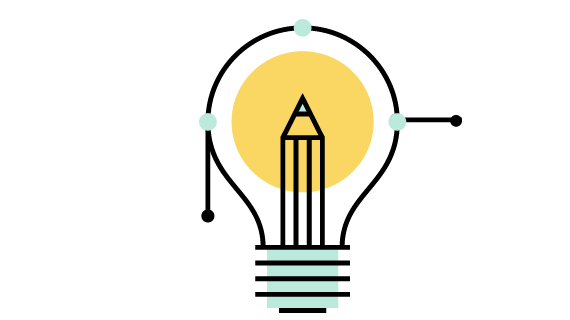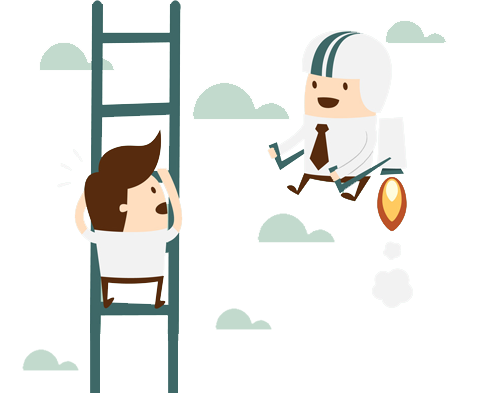There's an old African saying, "It takes a village to raise a child."
The same is true for app development, it requires a team.
The best way to develop mobile apps capable of generating the intended ROI is to
draw upon the capabilities of interconnecting specialists.
We have honed our processes over the last 5 years to develop an approach
that tackles even the most challenging development engagements.
So how exactly do we do this?
Requirements Analysis
Requirements Analysis (5%)
Every journey starts by first understanding the requirements, goals and objectives
of the proposed application. This process is lead by our team of freethinking
Technical Analysts.
Every facet of the proposed system is examined, evaluated and analysed
in detail until the fleshed out app concept emerges.
Documentation

Documentation (1%)

Our Technical Analysts may be freethinkers, but their logical approach is
utilised for the drafting of a definitive 'Requirements Document'.
This is the single-most important document within the process.
It is shared across all stakeholders and sits on the internal
and secure system accessed by every member of the project team on a daily
basis.
This document serves as the blueprint during production and upon
completion becomes the touchstone for all future updates.
Planning, Consultancy, Project Management & R&D
Planning, Consultancy, Project Management & R&D (12%)
On completion of the requirements stage, the actual solution is devised by
our Technical Consultants. Every technical aspect is formulated to ensure
that the final solution will function in strict accordance to the approved
specifications.
As every solution we develop is bespoke, Research and Development plays a
vital role in maximising the effective use of available technologies. Our
Consultants also consider the impact of future trends on the proposed
system, which minimises risks.
UX & User Experience Design

UX & User Interface Design (10%)

How users physically interact with a system is a fundamental pillar of its overall success.
During the design phases, we consider the user experience before the aesthetics.
Through wire frames, mockups and prototypes, we create intuitive interfaces that
reduce the end-users' cognitive load.
AGILE Development
AGILE Development (60%)
Development is done in strict accordance to the Work Breakdown Structure.
Every activity within the production life-cycle is mapped out across
inter-connected AGILE Sprints. Each Sprint results in a set of defined
deliverables. These deliverables are presented to our Clients through a
series of demonstrations and BETA deployments.
Only upon receipt of the Client's Sign-off, do we move on to the next
Sprint until development is completed.
Testing & Quality Assurance

Testing & Quality Assurance (10%)

Testing is intertwined throughout the entire development life-cycle.
Each module is unit tested throughout a Sprint. At the end of each Sprint,
the deliverables pass through rigorous Quality Assurance procedures.
BETA testing allows our Q&A team to assess the performance of the system,
including compatibility across the target devices. At the point of User
Acceptance Testing, it’s the deliverables that our Clients review and not
the stability. This allows for rapid market deployment.
Final Deployment
Final Deployment (2%)
We manage the migration of the final system from our Test Servers
to the live environments, ensuring minimal disruptions to our Clients'
systems.
Our responsibility does not just end there.
Upon deployment, we closely monitor the performance of the live system
as part of our bedding-in period to ensure total system functionality.
App Dev Guide

There’s a lot more to app development than just code..
Agile App Development Approach
Agile is a flexible approach to development that helps minimises the overall
risk and allows the project to adapt to change quickly. The goal of Agile
is to have an available release at the end of each iteration.
So why do we use this approach? Less planning - More Doing...
Agile break tasks into small increments with minimal planning.
Iterations are broken down into short time frames known as timeboxes
that typically last from one to four weeks.
Each iteration involves a cross functional team which is ultimately owned by the
Scrum Master. At the end of the iteration a working product is demonstrated to
project stakeholders.
Multiple iterations might be required to release a fully working product or new feature.
At the end of each iteration, stakeholders and the team review progress and
re-evaluate priorities with a view to optimising the return on investment
(ROI) and ensuring alignment with customer needs and company goals.
Onsite Client Consultant Partnership
Onsite Client Consultant Partnership (OCCP) is an innovative new service from Appino. It allows your organisation
to have access to a talented and knowledgeable resource on-site for the duration
of your project and beyond.
By placing our Client Consultant at your site, you essentially have
unmatched project transparency and are able to draw upon their tacit
knowledge daily. Your internal technical teams can work side-by-side
with our Consultants which can speed up the development process by as
much as 30%.
The wealth of knowledge that our onsite experts bring is added to the
collective knowledge of your own organisation. These Consultants are
both commercially minded and technology driven and responsible for
managing the expectations of project stakeholders.
Each OCCP engagement is tailored around your requirements which works
especially well for long-term engagements, usually over 6 Months.
In most cases, having our Client Consultant at your site can actually
reduce the overall cost of the engagement.


